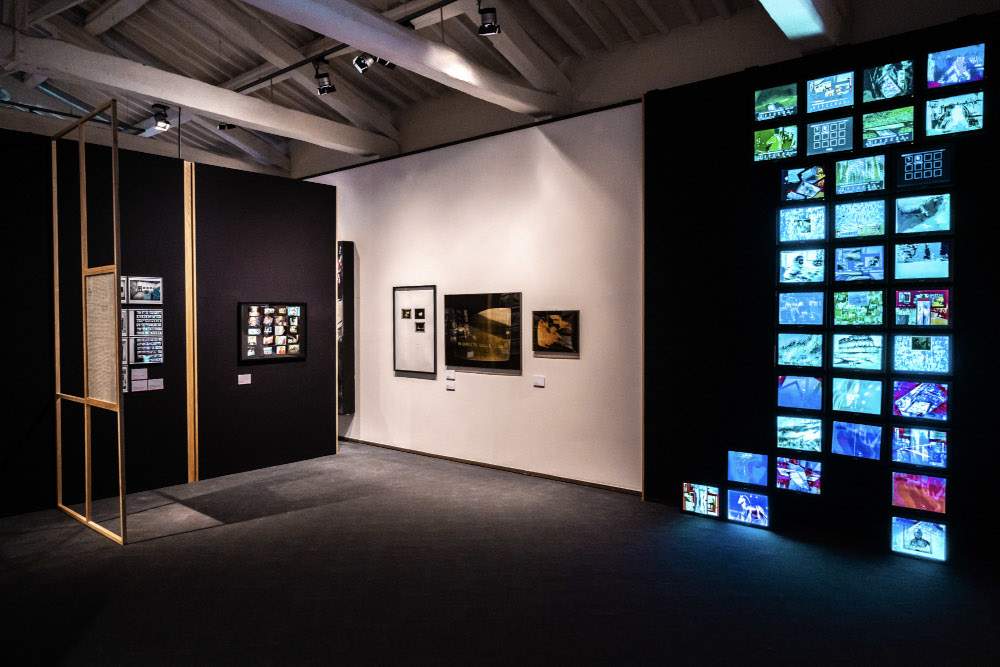From Fontana to Plessi: Ragghianti Foundation reflects on the dynamizing power of sign
From October 21, 2023 to January 7, 2024, the Fondazione Centro Studi sull’Arte Licia e Carlo Ludovico Ragghianti - ETS in Lucca presents the exhibition Pensiero video. Drawing and Electronic Arts, curated by Andreina Di Brino, realized with the support of Fondazione Cassa di Risparmio di Lucca and the support of Banco BPM. The exhibition starts from Carlo Ludovico Ragghianti ’s reflections on the importance of drawing as a fundamental means of the creative process, with the aim of offering visitors a historical fresco on the dynamizing power of the sign, including drawings, documentations, video installations, video environments and video projections by national and international artists from the late 1940s to today’s digital.
From sketches to articulations of details, from drawings with autonomous value to studies with personal annotations, from models to “manifesto drawings,” on paper or on media with the same function, the exhibition aims to emphasize how the practice of drawing is the custodian of a multiplicity of factors that mingle, meet, clash, intercept trends, social, cultural and political implications, sometimes anticipating scenarios that do not yet exist.
Thus, works by Lucio Fontana, Hans Namuth, Paul Falkenberg, Jackson Pollock, Mario Schifano, Wolf Vostell, Gianni Toti, Fabrizio Plessi, Studio Azzurro, Bill Viola, William Kentridge, Grazia Toderi, Giacomo Verde, Michele Sambin, Nalini Malani, Quayola and the “noble father” of video experimentation Nam June Paik, whose Little Italy (1990) is on display.
Authors who are different from each other, distant in terms of time, geographical areas and training, but brought together in a research path aimed at the restitution of a historical cross-section and the promotion of an unprecedented retrospective look, which aims to place in dialogue the personal and public spheres, the training of each of them and the evolution of the media, analog or digital, with which they have chosen to express themselves and enrich their research.
The exhibition gives an opportunity to relate to a temporality other than that of photography or the animated one of moving images: if one accepts the metaphor of “time as flux,” drawing, with its erasures, verifications, with its assemblages of lines and multiple and simultaneous signs, presents itself as a model of “counter-time,” which in the dialogue with works of an electronic nature opens up a series of considerations on the image, on the artists’ gaze from the two-dimensional to the three-dimensional plane of the completed work, in its composite declinations.
"Especially in the first decade of the 2000s, starting with the exhibition Time on Time (1999 - 2000), and then with Art of Video (2004) and the solo shows dedicated to Michael Snow (2007) and Jonas Mekas (2008), our Foundation reserved special attention to aesthetic expressions conveyed through new media," commented Fondazione Ragghianti director Paolo Bolpagni. “It was no accident, since Carlo Ludovico Ragghianti should be credited with having been a great forerunner in the valorization of Television as an artistic fact, the title of one of his memorable 1955 essays. Therefore, the exhibition conceived and curated by Andreina Di Brino stands in a well-defined groove, on the level of both methodology and critical approach. And it does so with an original accent, placing itself in the exhibition history of our Foundation, reconnecting with Ragghianti’s lesson and offering new interpretative keys.”
The exhibition is accompanied by the catalog Pensiero video. Drawing and Electronic Arts, edited by Andreina Di Brino and published by Edizioni Fondazione Ragghianti Studi sull’arte.
For info: www.fondazioneragghianti.it
Pictured, exhibition set-up. Photo by Alessandro Tosi.
 |
| From Fontana to Plessi: Ragghianti Foundation reflects on the dynamizing power of sign |
Warning: the translation into English of the original Italian article was created using automatic tools. We undertake to review all articles, but we do not guarantee the total absence of inaccuracies in the translation due to the program. You can find the original by clicking on the ITA button. If you find any mistake,please contact us.




























